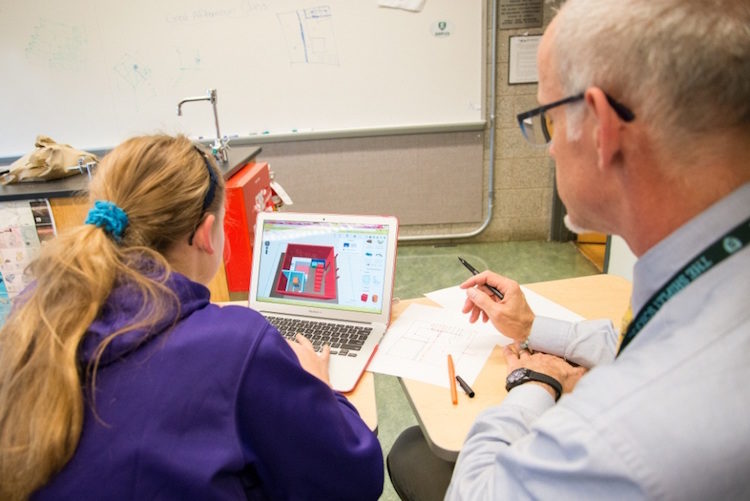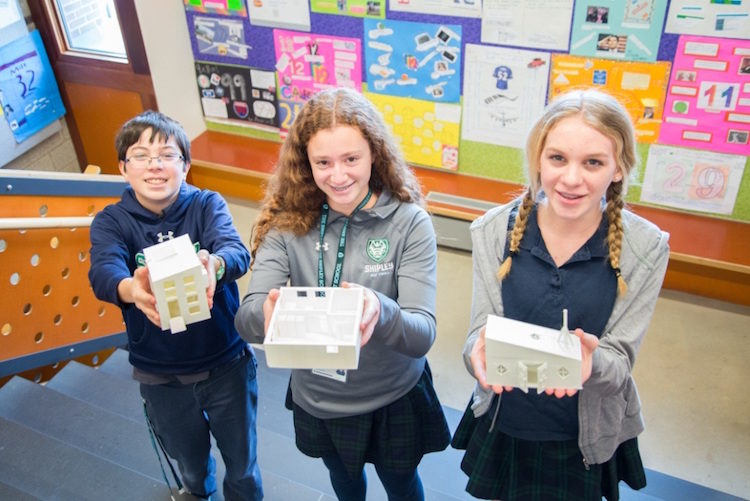If one single television show kept me riveted last summer, it was Tiny House Nation on the FYI Network. The program follows two renovation experts who specialize in designing tiny homes for people in various cities across the US. Without context, the lifestyle can seem claustrophobic and challenging – even impossible for someone like me. However, the program does a great job of revealing how practical, economical and exciting tiny homes can be for families all over the country. After hearing stories about the people behind the tiny walls, it’s easy to see that this social movement isn’t just a novelty, but a respectable way of life for those attracted to minimalistic and perhaps more environmentally-conscious lifestyles.
As a science teacher, I’m naturally drawn to the sustainability aspect of the Tiny House Movement. Many of us devour more resources than we need, and with the world population on a consistent rise, we should all be held accountable to our consumptions. With tiny homes’ ability to use fractional amounts of energy compared to the average-sized home, it’s easy to see opportunities to reduce our carbon footprint and improve our quality of life on the planet. I’m especially fascinated by how some folks are taking it one step further and going fully “off-the-grid” – relying on solar and wind power for energy usage.
I teach middle school at the Shipley School in Bryn Mawr, PA. While our current curriculum is deeply-rooted with science lessons in sustainability, I wanted to find a new way to spice things up. I designed a hands-on project aimed to engage my students in thoughtful conversation around environmental responsibility. Thus, we set out to explore and understand the world of tiny homes.
In groups of four, students were challenged to research and present a convincing argument for embracing an off-grid, tiny home lifestyle. In addition, students used an architectural design program to sketch, visualize and eventually bring their tiny houses to life via 3D printing. Allotted a space of 250 sq ft., students designed a functional and livable environment for themselves and one Golden Retriever.

One thing my students started to notice right away was that when restricted to 250 sq ft., creativity is a must! Everything from consolidated storage space to fold-out furniture required careful consideration. Nearly everything in each house attempted to be multi-functional, and my kids were forced to prioritize essentials from luxuries.

The “off-the-grid” component to this project begged the question – how does a person with no access to electricity, water, sewer or gas carry on with their lives as usual? One group proposed using a wood burning stove in lieu of electricity to conserve energy. Another proposed an A-frame house to take full advantage of solar panel coverage. Whatever the workaround, my students learned that there are clever ways for us to live functionally and still reduce overall energy usage.
When all was said and done, my class caught a short glimpse into the wide world of tiny homes. In their research, each student was able to wrap their heads around the idea of living minimally and sustainably. At Shipley, we engage every type of learner. Whether the student is a more creative or a practical thinker, this project evoked all aspects of critical thinking. I’m so thankful to stumble upon this truly fascinating way of life and share it with my middle school students.
My 8th grade student Maxwell might have said it the best. When I asked the class what the biggest challenge is in designing tiny homes, he replied, “You have to give up a lot.”
Well – maybe not a lot, but the road to embracing sustainability starts with letting go of a little. Tiny homes set a standard for minimalistic living and prove to the rest of us that we don’t need to be extravagant to live life to the fullest.

Caroline Feldman is a middle school science teacher at the Shipley School, a pre-K through 12 independent, coeducational day school in Bryn Mawr, Pennsylvania, committed to educational excellence and dedicated to developing in each student a love of learning and a compassionate participation in the world. When she’s not molding young minds, she can be found binge-watching shows about Tiny Houses.

Instead one could grow timber bamboo which grows a meter a day and ready for harvest in 3 years. Then make charcoal or burn dry bamboo. Next, use a mixor of animal waste and biomass to make methane for the gas stove. For the electric use a mixture of wind and solar.
I love this…..great job teach!!!!!
I am so grateful to have stumbled upon this! I also teach middle school, but in Texas. I actually moved here last summer but I used to live near Bryn Mawr! We moved our family here to build our tiny home and I have been wanting to use this fascinating adventure to teach my students about sustainability, minimalistic living, and our responsibility to our planet. I am definitely more motivated after reading this article. Thank you so much!!
What a great article! I plan to teach a unit on Tiny Houses to a group of gifted elementary students this summer. I’d like to have my students design a tiny house and then build a scale model. Can anyone recommend a design program that would be user-friendly for my group of students? Thanks!